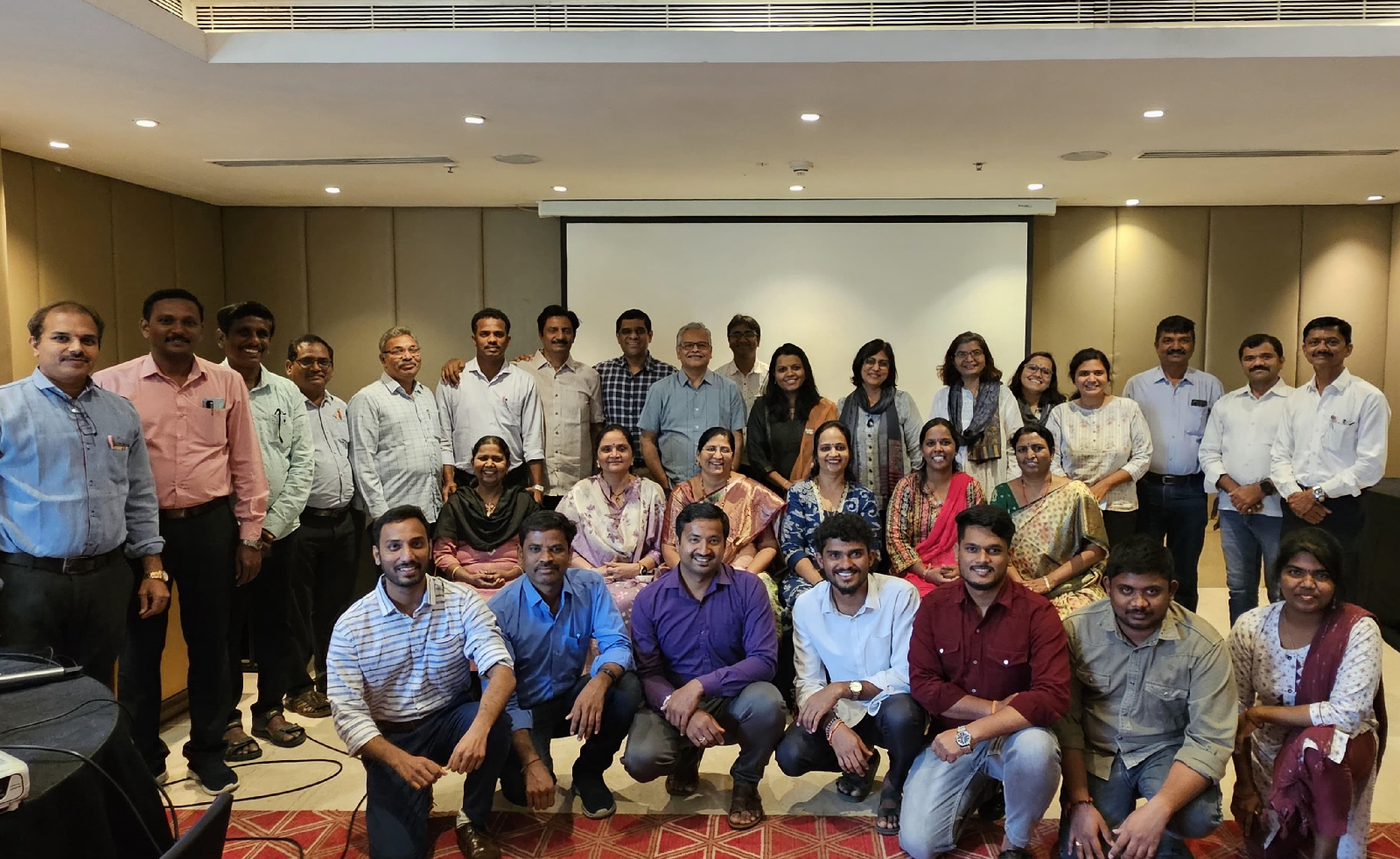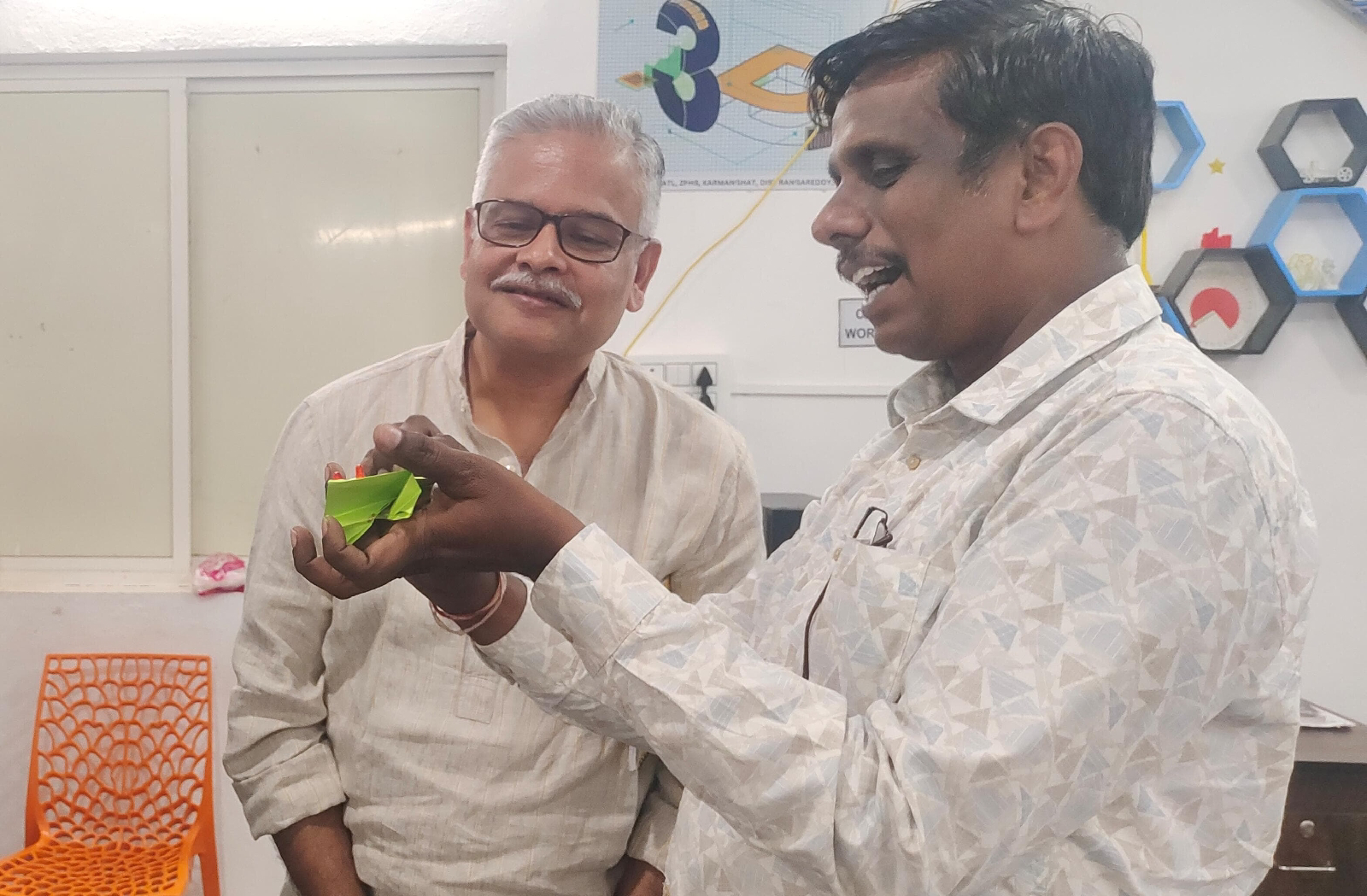CARE: Child Active Resourceful Education System
CARE: Child Active Resourceful Education System
Reforms for Successful and Sustainable Learning
Author: Ramesh Vanapalli (M.Sc., M.A., M.Ed)
Institution: Z.P.H. School, L.Kota, Vizianagaram
Presented at: National Teachers’ Science Congress 2013
Abstract
Education in the modern era demands a shift from traditional teacher-centered models to learner-centered frameworks that encourage creativity, autonomy, and lifelong learning. The Child Active Resourceful Education (CARE) system addresses these needs by proposing comprehensive reforms in curriculum, pedagogy, resource utilization, and evaluation methods. CARE emphasizes individualized attention, accountability, and the integration of multi-disciplinary approaches to create a more effective, engaging, and sustainable learning environment.
This paper presents an analysis of the CARE system, including its theoretical basis, practical implementation, and outcomes, along with recommendations for its integration into existing educational frameworks.
Introduction
Education is a dynamic process designed to develop individuals holistically, contributing to cognitive, psychomotor, and affective growth. The NCF-2005 emphasizes a pedagogical shift from teacher-centered to learner-centered education and from exam-oriented to learning-oriented evaluation. Despite these recommendations, traditional systems often fall short due to rigid curricula, lack of resources, and examination pressures.
The CARE system builds upon constructivist principles—drawing from Dewey, Montessori, and Piaget—while addressing implementation challenges by introducing practical reforms. These reforms aim to reduce the commercialization of education, overburdening of teachers, and stress on students, fostering an environment of sustainable and productive learning.
Objectives
1. To identify and address flaws in traditional teaching-learning processes.
2. To propose practical solutions for integrating constructivist teaching methods.
3. To reduce the commercialization and stress associated with education.
4. To promote overall student development through a multi-disciplinary approach.
CARE Framework
Key Principles
1. Knowledge Construction:
Encourages self-directed learning rather than knowledge transmission.
2. Process-Oriented Learning:
Focuses on multi-polar interactions and reducing centralized roles.
3. Integrated Domains:
Combines objectivism, subjectivism, connectivism, and behaviorism.
Structure and Implementation
1. Curriculum Reforms:
Introduction of concept catalogs organized into three stages:
Stage 1: Grades 1–4
Stage 2: Grades 5–8
Stage 3: Grades 9–12
Permanent concept IDs for standardized teaching plans and kits.
2. Teacher Role Division:
Planning Unit: Curriculum design and coordination.
Demo Unit: Interactive teaching sessions.
Remedy Unit: Individualized support and clarification.
Evaluation Unit: Continuous concept-based assessment.
3. Multi-Polar Learning:
Students engage with various resource persons and activities for holistic learning.
Projects run parallel to regular classes, promoting practical application.
4. Continuous Assessment:
Concept-wise evaluations replace traditional tests, ensuring in-depth understanding.
Implementation and Outcomes
Experimentation
The CARE system was implemented in a rural school with concepts from the topic "Electricity." Over one week, students engaged in multi-polar learning through demo sessions, hands-on projects, and individualized remedy sessions.
Findings
1. Learning Efficiency: Students scored higher in post-tests compared to traditional methods (5/10 vs. 7/10).
2. Sustainability: Knowledge retention was significantly higher, as evidenced by final tests conducted after one month (3/10 vs. 6/10).
3. Engagement: Both students and teachers expressed overwhelming support for the CARE system (82% of students and 95% of teachers).
AI analysis:
Strengths of the CARE System
1. Promotes child-centered, process-oriented learning.
2. Encourages holistic development by integrating multiple domains.
3. Reduces stress and exam pressure through continuous, individualized assessment.
4. Minimizes educational commercialization, creating a more equitable system.
5. Offers a scalable framework adaptable to diverse educational contexts.
Challenges
1. Resource Dependence: Requires substantial resources and trained personnel.
2. Scalability: Implementation in under-resourced schools may be challenging.
3. Resistance to Change: Teachers and administrators accustomed to traditional systems may resist adoption.
4. Initial Adaptation: Transitioning students and teachers to a new system may take time and effort.
Recommendations for Improvement
1. Pilot Programs: Conduct trials in diverse schools to refine processes.
2. Technology Integration: Leverage AI for assessments and personalized learning.
3. Teacher Training: Develop comprehensive training modules for CARE implementation.
4. Simplified Processes: Streamline resource allocation and management to enhance feasibility.
5. Policy Alignment: Collaborate with educational boards to incorporate CARE principles into national curricula.
Integration of AI in the CARE System
1. AI for Concept Catalogs:
Use AI-driven knowledge databases to create dynamic, personalized concept catalogs that adapt to each student's learning pace and style.
AI can recommend learning paths based on student progress and mastery levels.
2. AI in Demo Units:
Replace live demonstrations with AI-powered interactive simulations, augmented reality (AR), and virtual reality (VR) tools to create immersive learning experiences.
AI chatbots or virtual tutors can deliver real-time explanations and demonstrations tailored to the learner's understanding.
3. AI in Remedy Units:
Deploy adaptive learning platforms (e.g., AI tutors like ChatGPT) to provide individualized learning support, address specific doubts, and offer personalized practice exercises.
AI can analyze students' mistakes and provide step-by-step guidance to improve their understanding.
4. AI in Evaluation Units:
AI-powered assessment tools can evaluate student performance through quizzes, assignments, and simulations, providing instant feedback.
Natural language processing (NLP) tools can assess written and verbal answers to ensure a thorough evaluation of cognitive and communication skills.
5. Multi-Polar Learning with AI:
AI can serve as a multi-disciplinary resource, offering insights and knowledge across various subjects in real-time.
AI-driven collaboration platforms can enable group projects and peer learning guided by AI moderators.
6. Data-Driven Insights:
AI analytics can monitor student engagement, learning patterns, and performance, providing insights to further refine the CARE model.
Predictive analytics can identify potential dropouts or struggling students, enabling timely intervention.
Conclusion
The CARE system represents a transformative approach to education, focusing on individual care, accountability, and process-oriented learning. By addressing key challenges in traditional systems, CARE has the potential to foster a generation of critical thinkers and lifelong learners. With proper implementation and support, CARE can revolutionize education by making it more inclusive, equitable, and effective.
With AI integration, CARE becomes a futuristic model, blending technological efficiency with the essence of personalized education. This shift can redefine learning, making it more accessible, equitable, and impactful.



Comments
Post a Comment